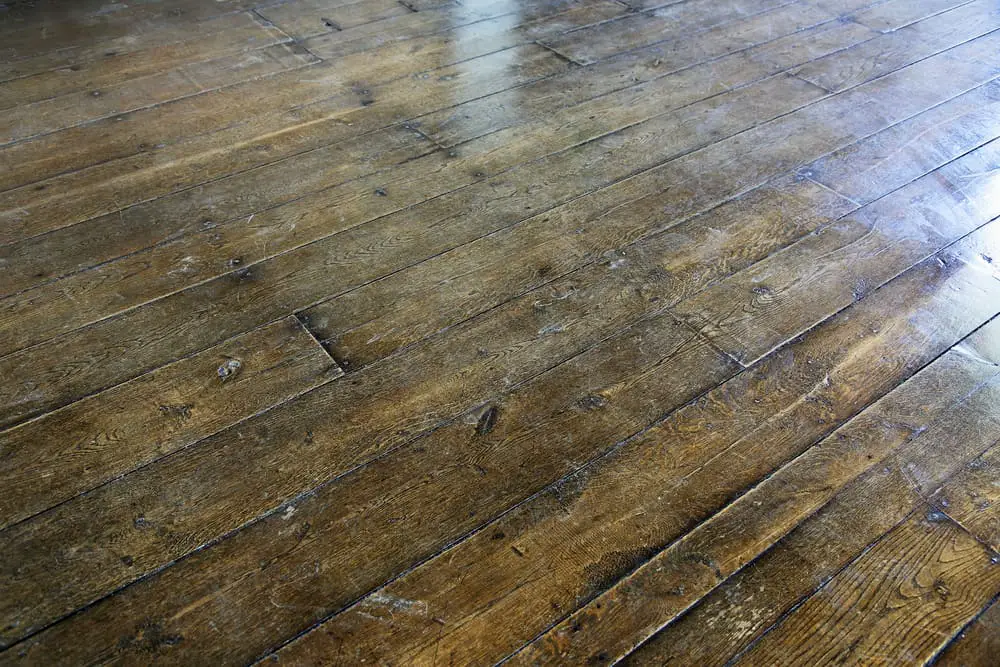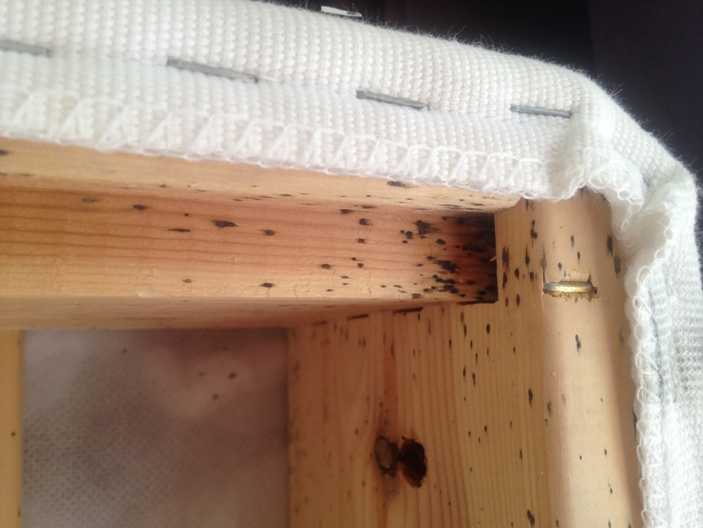Imagine settling into your cozy bed for a restful night’s sleep, only to be greeted by the unwelcome itch of a bed bug bite. It’s a nightmare scenario that many have unfortunately experienced. While you might think those pesky critters are exclusive to mattresses and bedding, their realm extends beyond the obvious. One question that often arises is whether bed bugs can make a home in your hardwood floors. The answer, while not straightforward, holds some surprising insights into the world of these tiny parasites.

Image: www.pestcontrolsleuth.com
Bed bugs, those nocturnal creatures known for feeding on human blood, are masters of hiding. Their small size and ability to squeeze into tight spaces make them difficult to detect. This begs the question: Do hardwood floors, with their seemingly solid surfaces, provide a suitable haven for bed bugs? It’s a query that warrants a deeper exploration, delving into the intricacies of bed bug habitats and the features that make hardwood floors a potential home for these unwelcome guests.
The Habitat Habits of Bed Bugs
To understand whether bed bugs can reside in hardwood floors, we must first grasp their preferred living conditions. Bed bugs are primarily attracted to areas where they can find food – humans. This explains why bedrooms, with their close proximity to sleeping inhabitants, become prime targets. But their choice of hiding spots goes beyond just proximity. Bed bugs seek out dark, secluded, and relatively cool spaces where they can lay their eggs, molt, and hide from predators and pesticides.
The ideal bed bug habitat typically includes:
- Cracks and Crevices: Bed bugs love to squeeze into tight spaces, making gaps in walls, under baseboards, and even between floorboards, ideal hiding spots.
- Furniture: Sofas, chairs, beds, and even furniture legs can harbor these pests.
- Loose Wallpaper: Bed bugs can easily move beneath loose wallpaper, creating a secret passageway.
- Clutter: Piles of clothing, boxes, and other clutter provide ample hiding places.
Hardwood Floors: A Bed Bug’s Perspective
Now let’s look at hardwood floors. At first glance, they might seem too smooth and solid to offer shelter for bed bugs. However, the reality is more nuanced. While bed bugs may not be able to burrow directly into the wood itself, certain aspects of hardwood floors can still provide valuable hiding spots.
Here’s where those pesky bed bugs can hide in hardwood floors:
- Gaps Between Floorboards: Even the smallest gaps between floorboards can provide a safe haven for bed bugs, allowing them to slip in and out undetected.
- Baseboards: Bed bugs can easily conceal themselves behind baseboards, which are often overlooked during inspections.
- Underneath Furniture Legs: The space between the floor and furniture legs can create cozy hideaways for bed bugs, especially if the furniture is heavy and doesn’t move frequently.
- Loose Floorboards: If any floorboards are loose or have gaps around their edges, these can provide ideal entry points for bed bugs.
Hardwood Floor Characteristics Affecting Bed Bug Infestations
The possibility of bed bugs living in your hardwood floors depends on several factors. Here’s a closer look:

Image: baciamistupido.com
1. Floorboard Thickness and Installation:
The thickness of your floorboards and the way they are installed play a role. Thin floorboards with tighter gaps between them provide fewer hiding places. However, if the installation is loose or uneven, it can create gaps that become havens for bed bugs.
2. The Presence of Cracks and Crevices:
Even in seemingly solid hardwood floors, imperfections can arise. Cracks along the floor, around doorframes, or in the grout of tiled areas near the floor offer easy access for bed bugs.
3. The Level of Cleanliness:
While hardwood floors are usually easier to clean than carpets, dirt and debris can still accumulate, providing a food source and shelter for bed bugs. Regular vacuuming and cleaning are crucial in preventing infestation.
4. The Proximity to Other Infested Areas:
If any other areas in your home are infested with bed bugs, the likelihood of them spreading to your hardwood floors increases. This is especially true if the surrounding rooms have furniture that frequently touches the floor.
How to Detect Bed Bugs in Hardwood Floors
The good news is that even if bed bugs can inhabit hardwood floors, they still leave behind some signs. Here’s how to detect their presence:
- Visual Inspection: Look for tiny, reddish-brown bugs in cracks and crevices, particularly along baseboards, under cabinets, and even behind furniture.
- Black Spots (Feces): Bed bugs leave behind small black dots (feces) which can be found along floorboards, furniture legs, and near cracks.
- Bloodstains: Bed bug bites can cause small bloodstains on sheets and pillowcases, but these can also appear on bed frames, walls, or even hardwood floors, if bed bugs are active in those areas.
- Shed Skins: As bed bugs molt, they shed their skin, which can be found in areas where they hide.
- Eggs: Bed bug eggs are tiny, white, and pear-shaped. Look for them in cracks and crevices, especially in dark and undisturbed areas.
- Bed Bug Bites: These bites typically appear in groups or lines, often on exposed skin like arms and legs. They can be itchy and cause a red welt.
Prevention is Key!
Protecting your hardwood floors from bed bugs requires a combination of vigilance and proactivity. Here are some helpful tips:
- Regular Inspections: Conduct frequent checks for bed bugs, particularly in high-risk areas such as bedrooms, furniture, baseboards, and cracks.
- Effective Vacuuming: Regularly vacuum your floors and furniture, especially around baseboards and under furniture where bed bugs and their eggs might be hiding.
- Proper Sealing: Ensure that your furniture legs are sealed, and there are no gaps in floorboards, baseboards, or walls where bed bugs can access and hide.
- Cleanliness and Clutter Management: Maintain clean and clutterfree environments, making it harder for bed bugs to find a suitable place to hide.
- Professional Pest Control: If you suspect a bed bug infestation, call a professional pest control company who can provide effective treatment and eliminate the problem.
Can Bed Bugs Live In Hardwood Floors
The Bottom Line: Can Bed Bugs Live in Hardwood Floors?
The answer is yes, bed bugs can live in hardwood floors, but not necessarily in the wood itself. They can find shelter in gaps between floorboards, under furniture legs, behind baseboards, and even in cracks along the wood. Regular inspections, effective cleaning, and proper sealing are crucial to prevent and detect bed bug infestations, especially if you have hardwood floors in your home. Remember, early detection and action can help avoid a major infestation and keep your home, and your sleep, bed bug-free.





